I could not believe my ears. Had she really just said that? I’d only known Margaret (the local farmer) for a few hours. How could she possibly have formed such a robust opinion of me in such a short time?
It was the summer of 2008. I had applied for the post of gardener at the Priory and Margaret (acting on behalf of the absent owner) was showing me around the grounds. I thought we were getting on famously; wandering about and chatting; deciding which plants could be saved, which couldn’t; what was beautiful, what was awful; and simply staring at the immense amount of work. But it seemed we weren’t getting on as well as I imagined. As I turned to look at her – lower lip quivering – I realised with a surge of relief that I had misunderstood. Margaret was glaring at the Priory yew hedge and muttered again, “I hate yew.”
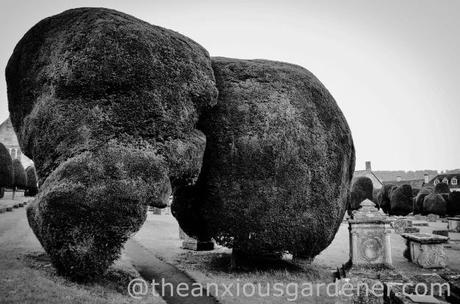
Sculpted yew, St Mary’s churchyard, Painswick
She told me how recently one of her bullocks had suddenly and inexplicably died. Upset and bewildered as to the cause, she arranged a post-mortem. And in the beast’s stomach (or one of them), the vet found a tiny sprig of yew.

The unfortunate animal had nibbled on an overhanging yew branch and, as any farmer will tell you, it is highly toxic to livestock. And to humans too. The berries are the only edible part – though I find them fairly bland. You must however spit out the black, central seed or at least not chew them. Whole they’ll pass harmlessly through the gut; chew them and well … three crushed seeds can kill.
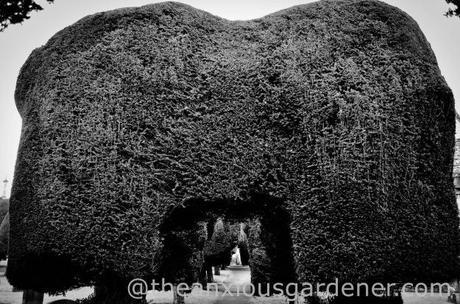
(As a young boy, my partner would sprint past yew trees holding his breath; so convinced was he that even a sniff of them could prove fatal). Since the death of her bullock, Margaret has been on a mission to remove any yew within reach of her cows. She loathes yew trees.

But (cattle killing properties aside) I don’t. Whenever I’m in the vicinity, I make a detour to St Mary’s Church in Painswick, Gloucestershire.
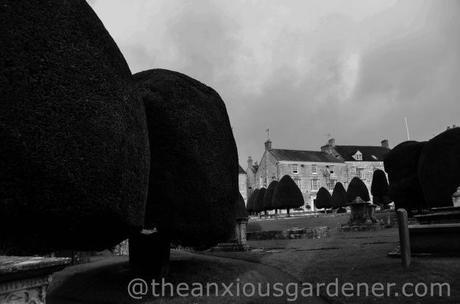
The graveyard has more than a hundred yews, almost all of them planted in the early C18th and all meticulously shaped.

In yew terms these are youngsters; they can live for a couple of millennia and a handful in England and Wales might be more than 4000 years old. (Yew is notoriously difficult to age as the heart-wood eventually rots away leaving a hollow trunk. And so, of course, when the tree dies there are no rings to count).

According to the St Mary‘s website, specialist contractors clip and trim the trees once a year in September. (I took these photos in October 2013).
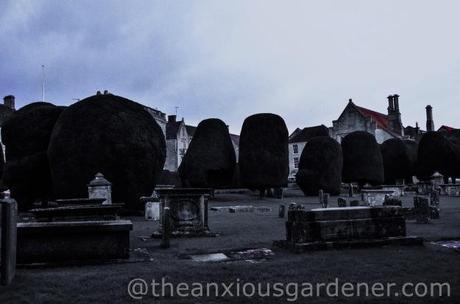
What an immense, exacting and very tiring job that must be. I shan’t be putting in a bid when the job is next put out to tender.
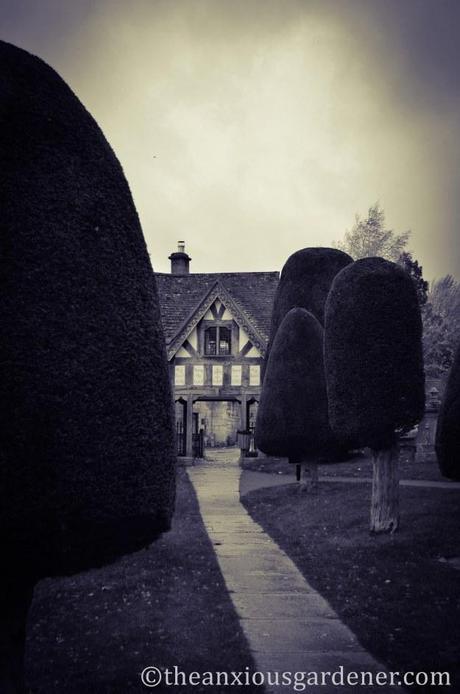
But the effect is remarkable: oddly beautiful, slightly creepy, rather poisonous and quite unique.
I love you yew.

